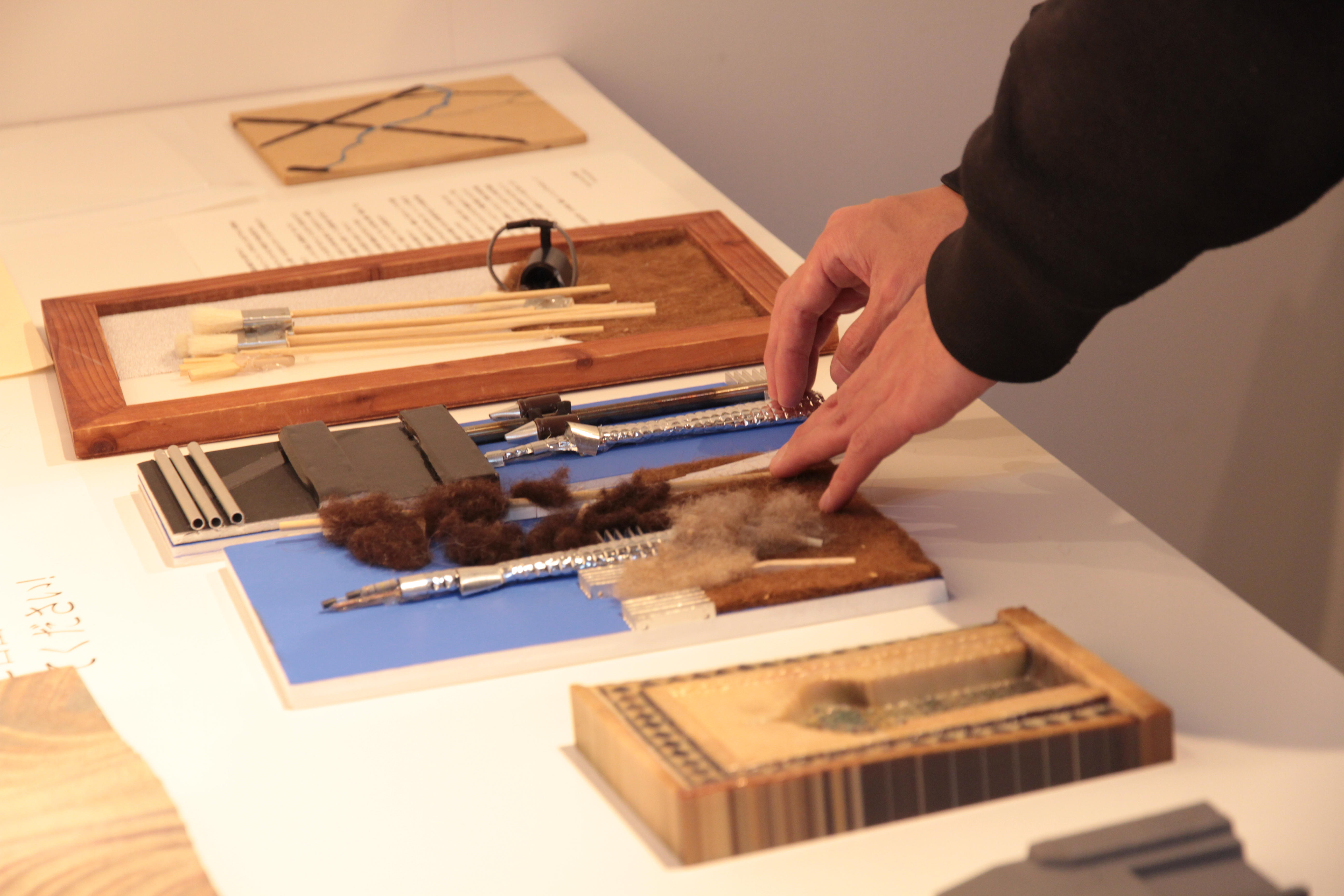A detail of one of her works made entirely from dressmaker pins.
The artist Tara Donovan, and family, with one of her new mylar works.
Donovan in front of a work from her latest series “Drawings (Pins),” currently up at Pace Gallery.
In the art world, Tara Donovan has become the belle of the banal. She employs everyday objects such as drinking straws, buttons or No. 2 pencils to create large-scale sculptures and prints that take on a life (and light) of their own. She allows the shape of the chosen material to determine the form of the piece until it becomes magically other (think vast moonscape in Styrofoam cups), managing to transcend both materiality and gimmickry in a culture that celebrates both.
In her latest series, ‘‘Drawings (Pins),’’ on view this month at the Pace Gallery in Chelsea, shimmering metallic ‘‘canvases’’ are composed of dressmaker pins — tens of thousands of them. The cumulative effect is almost painterly. While these works are two-dimensional, they deal with the same issues as her ‘‘site-responsive’’ sculptures, as she calls them: ‘‘It’s all about perceiving this material from a distance and close up and how the light interacts with it,’’ Donovan recently explained, citing how Scotch tape, stuck to itself in biomorphic swirls, takes on a ‘‘fugitive color’’ when hit by the sun. ‘‘I’m constantly looking for this kind of phenomenological experience.’’

















